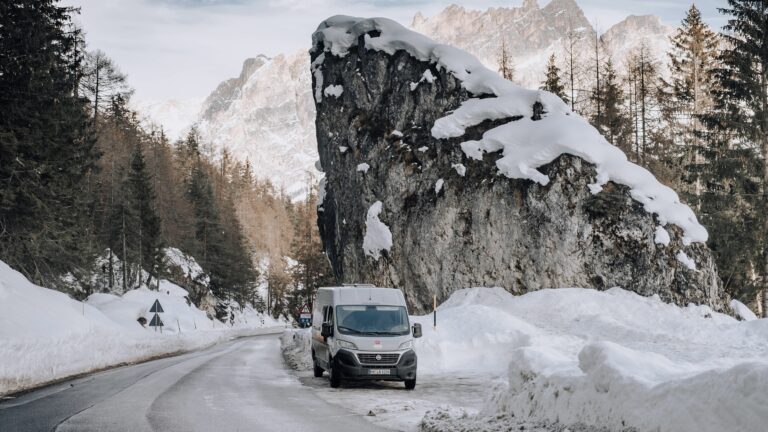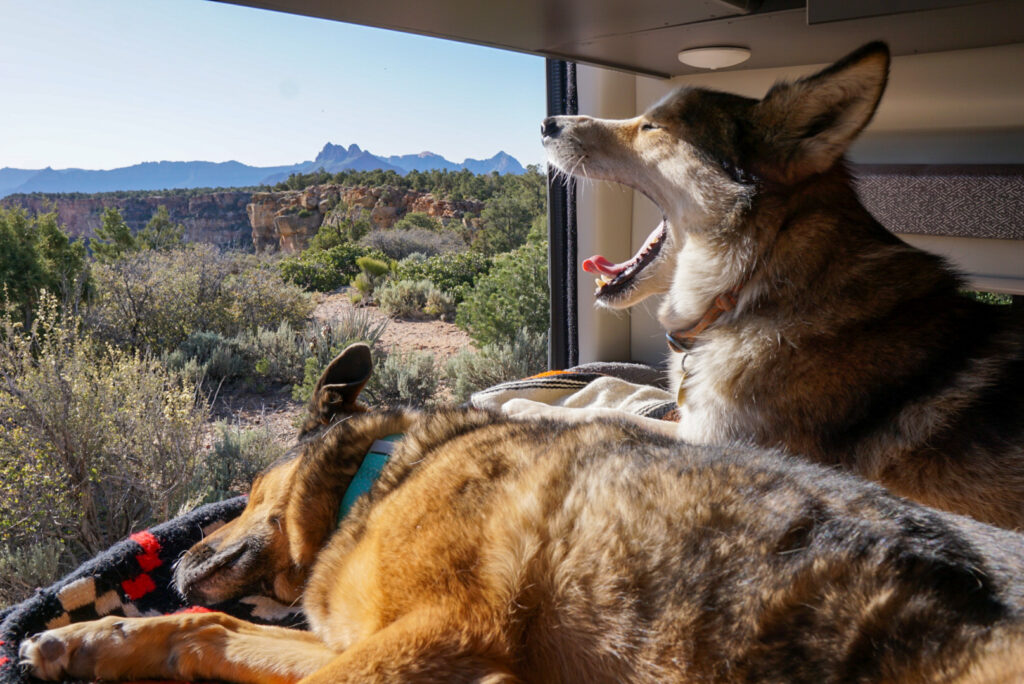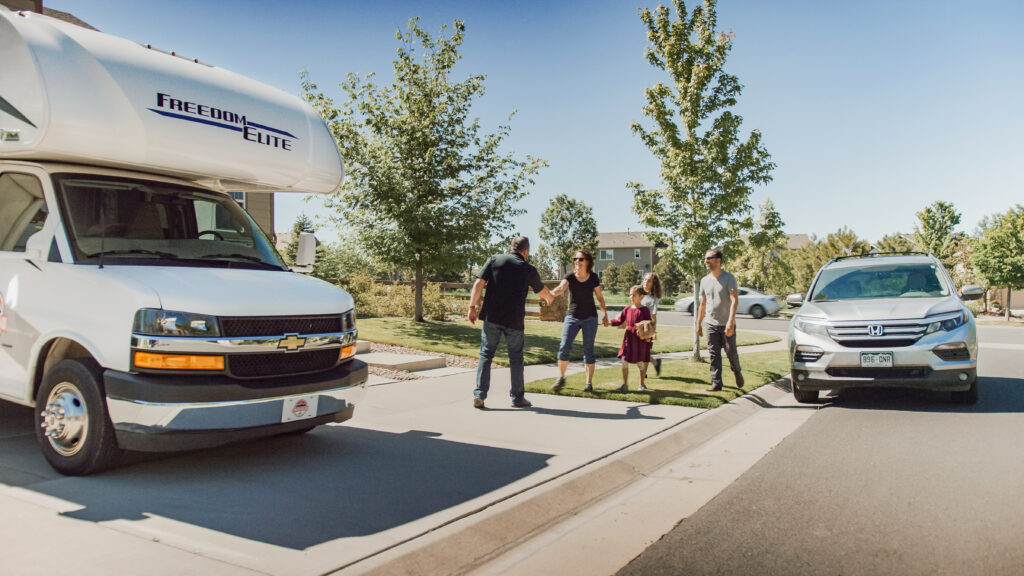
Spending some time making an RV travel planner can keep your trip organized and on budget. If this is your first time RVing, we’ve got some tips for an RV travel planner that will cover all the important parts of your trip. You’ll want to think about where you’re going, how much it will cost, and what kind of RV you need for the experience. This RV travel planner will help you consider all of those factors and more as you plan your trip.
An RV Travel Planner For First Timers to Experienced RVers
Whether this is your first time RVing, or you’re practically a professional, this RV travel planner will help you to consider everything you need for your next trip.
If this is your first time renting an RV, it can seem a little overwhelming. But you can definitely handle RV camping! You’ll want to do some preparation to make sure you’re ready for your outing. And if you run into trouble, the good news is that RVers are a very friendly bunch. You’ll likely meet someone at your campground who can help you out with any problems. Also, if you rent from RVshare, you’ll have someone you can call 24/7 to help you over the phone.
Here are a few tips for first-time renters:
Consider starting small
You may want to plan a shorter trip to a nearby campground for your first outing, just to get some practice. You can set everything up, figure out how to use the hookups, and see what, exactly, an RV camping experience entails before you head off on a cross-country weeks-long trip. You may realize you prefer longer stays, and you don’t want to set up and tear down every day or so on a long journey. Or you may realize that it’s easier than you thought, and you want to do a much longer trip. A practice run will give you lots of information for longer trips in the future.
Plan your budget
You’ll want to have a budget for your RV trip, of course. In fact, your budget might dictate how long of a trip you plan and where you will go.
Be sure to include the rental cost, gas, food, admission fees to parks or attractions, and some spending money for souvenirs. You’ll also want some cushion for minor mishaps or unexpected expenses.
Plan your route
You’ll want to plan your route ahead of time, especially on your first few RV outings. Consider your rig as you’re planning – the size may keep you from certain winding roads or places with low overpasses. Also, remember you’ll likely be driving slower than you do in your usual vehicle, so you won’t get as far each day. Finally, you may want to schedule rest days after a long day of driving so keep those in mind as you plan as well.
Learn about your rig
You’ll want to spend some time getting to know the rig you rent for your trip. Be sure to drive it around for a bit with the owner. Ask questions about anything you don’t know how to operate. Walk through the inside and go over everything from how to flush the toilet to where the ladder for a top bunk is stored. Practice driving before you head out on the freeway, and make sure you know how to operate everything on the dashboard as well.

RVing with pets
Many RVshare rentals allow pets, so you don’t have to leave your furry friend at home. Along with making sure your rented RV allows pets, you’ll also need to make sure the campground where you’re staying allows them. Finally, have a plan while you’re out exploring during the day. You’ll need to make sure the parks or other attractions where you’re headed allow you to bring your pet. Or you’ll need to make sure you have a comfortable area in your RV that’s warm enough in winter and cool enough in summer for your pet to stay there.
As you plan your travel, don’t forget to pack for your pets! You’ll also want to make sure their vaccinations are up-to-date, and you’ll want to have a plan in case you need to make an emergency vet visit while on the road.
Budget-friendly RV travel
As we mentioned above, you’ll want to have a budget for your RV trip! The following tips can help you keep your costs down while you travel.
Cook in the RV
If you’re renting a rig with a kitchen, you can save money by using it instead of eating out. Try these simple recipes that are easy to cook in a small RV kitchen. You can also prep meals at home beforehand and then reheat them while you’re camping. If your campsite has a fire pit, you can also try campfire cooking for delicious dishes under the stars.
When cooking in an RV, it’s helpful to plan your meals ahead of time. Consider whether you’ll be out exploring all day – those are the days when you may want a slow-cook meal or something you can reheat quickly. If you plan to spend a day at camp, you may have the time to build a campfire and cook there instead.
Save any recipes you plan to make to your phone or print them out so you have them quickly at-hand. You may want to download or print them in case your campsite doesn’t have WiFi.
Bring along an extra table you can set up outdoors for more counter space as well – RV kitchens can be crowded and small.
Stay at free or inexpensive campgrounds
Generally speaking, the more amenities a campground has, the more expensive it will be. If you’re willing to forgo some comforts like a campground pool, laundry, bicycle rentals, and other perks, you can save money. You can save even more at sites that don’t have hookups – you’ll just be living off the water and power you have on-board your RV.
You can also try boondocking – camping off the grid. A lot of Bureau of Land Management lands allow people to camp in areas that don’t have designated campsites. You’ll need to follow some basic rules, especially about leaving no trace and not camping for more than fourteen days. You can save a lot of money if you’re willing to rough it!
Look for free attractions
Check out the free days at national parks, or see if the places you’re traveling have other free attractions. You can stop in at town visitor centers to get the scoop on free or inexpensive things to do in the area. Visitor centers may also have brochures with discounts for local attractions.
Travel during the off-season
Everything from campgrounds to RV rentals can be cheaper during the off-season and can get more expensive during more popular times. Restaurants and attractions can also adjust their prices according to the season. As an added bonus, you’ll also have fewer crowds to deal with when you travel during less-popular times.
One word of warning, however. Sometimes businesses might close during the off-season for inventory, or so employees can go on their own vacations. If you plan to travel then, be sure the things you want to do are open.
Stay in
When you are RVing, even some of the most basic of activities feel more exciting. After a long day of adventure, there is nothing wrong with staying in the RV and enjoying a cozy night “at home.” Stream your favorite shows on Hulu (get your first month free with RVshare!), have a craft night, play games, sit around the fire, etc. Simply being in a different environment makes these activities all the more fun.
RV storage and organization
Even large RVs still have limited space, and they’re smaller than sticks-and-bricks homes. Also, as RVs move down the road, anything left unsecured can go rolling (or even flying) around in the back. So you’ll want to plan your storage and organization carefully.
One of the biggest challenges to RV storage is the fact that most of us tend to overpack when headed on an RV vacation. Think carefully about your RV packing list. If you’ll be near laundry facilities, consider bringing fewer clothes and washing them more often. Think about unused space where you can organize or store items. You can hang a shoe organizer on a bathroom door for small items. You can install a spice rack on a kitchen cabinet door. You can use expandable, stackable shelves for more space in your cupboards. There are lots of RV organization tips that can help maximize space in an RV.
Finding the perfect RV for travel needs
One of the most important parts of RV travel is actually choosing the RV you want to use. You’ll want to make sure your RV of choice is large enough to comfortably fit everyone who is coming on the trip. Consider not only where everyone will sleep, but where they will store their stuff. Does anyone need table space for homework or virtual work? Do you have a place for any pets coming along?
You’ll also want to consider the type of trip you’re planning. If you’re headed on winding or dirt roads, you’ll want a small vehicle with clearance, like a campervan or small pop-up or teardrop trailer. Wide-open freeways are easier for rigs of all sizes to navigate. Also, think about the size of rig you’re comfortable driving. If you’re nervous about driving a large Class A motorhome, consider a smaller RV for your first trip.
Consider your budget as well. Larger rigs with more amenities are going to cost more than bare-bones RVs or campers. Finally, think about how you’re going to get around after you’ve set up camp. If you’re towing a trailer, you can unhitch and use your tow vehicle for transportation. You can also use a campervan. However, if you have a larger Class C or Class A motorhome, you may want to consider towing a vehicle behind the RV for you to use.

Pickup options
Once you’ve settled on your RV and campground, you can consider how you would like to pick up your rig. You have a few choices to get the RV you have rented.
Local pickup
You can pick up an RV local to you and drive it to your destination. One pro of picking up locally is that you can then drive your RV to your own home to pack it for your trip. However, depending on how far your destination is, you may spend more time driving than with the next option.
Pick up at your destination
If you want to RV camp somewhere far from home, you can rent an RV closer to your destination. Then you can fly there, pick up your RV, and head out to camp. A con here is that you’ll need to either bring everything you want with you on a plane or buy it at your destination. However, this is a good choice if you have limited vacation time and want to cut down on driving.
Delivery option
Many RVshare renters also offer a delivery option. The owner of the RV will drive it to the campground you’ve chosen and will set it up for you. This is a good option if you are nervous about driving or setting up an RV. It’s also a good option if you’re short on time and just want to arrive and begin camping. On the other hand, this service generally costs an extra fee. You’ll also be locked into one campground until the owner comes back to take everything down at the end of your stay.
Finding the perfect campground
After you’ve found the perfect RV, you’ll want to look for the perfect campground for your trip! You’ll want to consider the location of your campground first. Make sure it’s within a reasonable driving distance for you. Also, make sure it’s near the sights you want to see and that you have a way to get to them. Many campgrounds near attractions like national parks will have park shuttles or other forms of transportation to take you around. If they don’t, you’ll have to have your own way to get around.
You’ll also want to make sure your rig will fit at the campsite – some sites have length restrictions. See if you’ll have a yard, a firepit, or a picnic table if those things are important to you. You may also want shade if you’re visiting during the summer…but you’ll also want to make sure any trees aren’t so low that they scrape your RV.
Check whether the campground has hookups. Some campsites have just electric, while others have electric, water, and sewer hookups. You’ll need to determine which (if any) hookups are essential for you and which you can live without.
RVshare has lots of resources for anyone who rents an RV through the platform, including emergency roadside assistance and insurance.
Hopefully this RV travel planner has helped you as you organize and plan your next trip!






